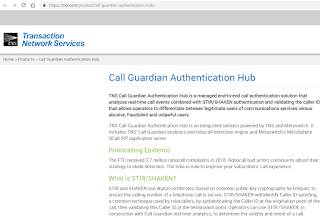Google Cloud introduced Anthos, a new open platform form managing applications, unmodified, on existing on-prem hardware or in public clouds, including third-party clouds like AWS and Azure.
 Anthos, which is the new name for the Cloud Services Platform that Google announced last year, is generally available both on Google Cloud Platform (GCP) with Google Kubernetes Engine (GKE) and for private data centers with GKE On-Prem. Anthos Config Management creates multi-cluster policies that set and enforce role-based access controls, resource quotas, and namespaces—all from a single source of truth. Anthos leverages open APIs and is based on GKE, Google's managed Kubernetes service.
Anthos, which is the new name for the Cloud Services Platform that Google announced last year, is generally available both on Google Cloud Platform (GCP) with Google Kubernetes Engine (GKE) and for private data centers with GKE On-Prem. Anthos Config Management creates multi-cluster policies that set and enforce role-based access controls, resource quotas, and namespaces—all from a single source of truth. Anthos leverages open APIs and is based on GKE, Google's managed Kubernetes service.
Anthos launches with more than 30 hardware, software and system integration partners. Cisco promises integrations between Anthos and its own data center, networking, and security technologies, including Cisco HyperFlex, Cisco ACI, and Cisco Stealthwatch Cloud and Cisco SD-WAN. VMware, Dell EMC, HPE, Intel, and Lenovo have committed to delivering Anthos on their own hyperconverged infrastructure for their customers.
Google Cloud is also introducing Anthos Migrate in beta, which auto-migrates VMs from on-premises, or other clouds, directly into containers in GKE.
Google Cloud also unveiled Cloud Run, a fully managed serverless execution environment for containerized apps. Cloud Run on Google Kubernetes Engine (GKE) extends the serverless developer experience and workload portability to a GKE cluster. https://cloud.google.com/anthos/
 Anthos, which is the new name for the Cloud Services Platform that Google announced last year, is generally available both on Google Cloud Platform (GCP) with Google Kubernetes Engine (GKE) and for private data centers with GKE On-Prem. Anthos Config Management creates multi-cluster policies that set and enforce role-based access controls, resource quotas, and namespaces—all from a single source of truth. Anthos leverages open APIs and is based on GKE, Google's managed Kubernetes service.
Anthos, which is the new name for the Cloud Services Platform that Google announced last year, is generally available both on Google Cloud Platform (GCP) with Google Kubernetes Engine (GKE) and for private data centers with GKE On-Prem. Anthos Config Management creates multi-cluster policies that set and enforce role-based access controls, resource quotas, and namespaces—all from a single source of truth. Anthos leverages open APIs and is based on GKE, Google's managed Kubernetes service. Anthos launches with more than 30 hardware, software and system integration partners. Cisco promises integrations between Anthos and its own data center, networking, and security technologies, including Cisco HyperFlex, Cisco ACI, and Cisco Stealthwatch Cloud and Cisco SD-WAN. VMware, Dell EMC, HPE, Intel, and Lenovo have committed to delivering Anthos on their own hyperconverged infrastructure for their customers.
Google Cloud is also introducing Anthos Migrate in beta, which auto-migrates VMs from on-premises, or other clouds, directly into containers in GKE.
Google Cloud also unveiled Cloud Run, a fully managed serverless execution environment for containerized apps. Cloud Run on Google Kubernetes Engine (GKE) extends the serverless developer experience and workload portability to a GKE cluster. https://cloud.google.com/anthos/


















